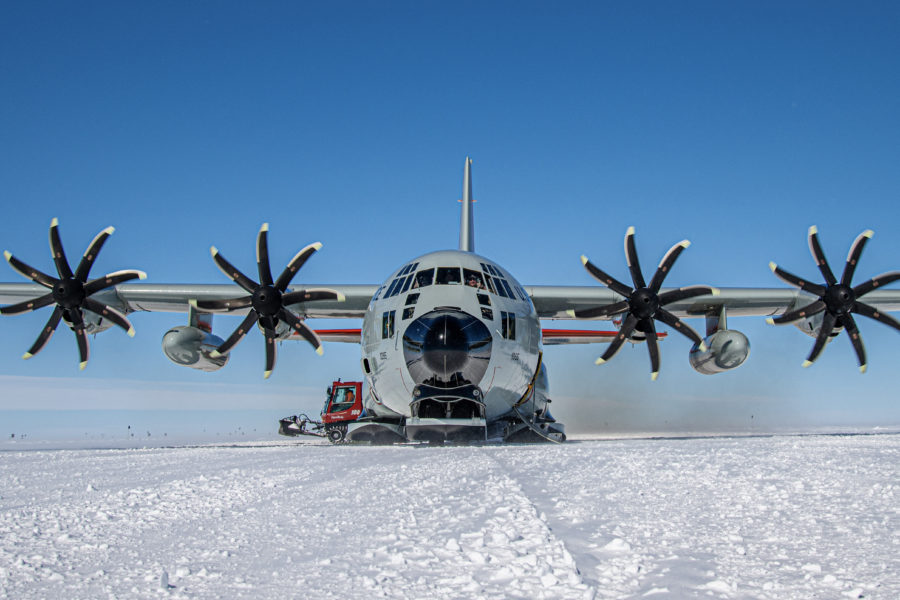The LC-130H is a ski-equipped, Arctic-support derivative of the C-130H. It is capable of direct resupply of Antarctic research stations and high-arctic radar sites utilizing ice and snowpack runways.
The LC-130H fleet supports the National Science Foundation’s (NSF) Antarctic research, ferrying much of the material, provisions, and personnel between Christchurch, New Zealand, and McMurdo Station, Antarctica. The aircraft also provide ongoing support to the remote Amundsen-Scott South Pole Station.

USAF began augmenting the Navy’s “Operation Deep Freeze” with the C-124 in 1956. C-130s began Antarctic support in 1959, operating without skis until the initial ski-borne deployment of the C-130D in January 1960. By 1975, the New York ANG’s 109th AW operated USAF’s only ski-equipped LC-130 supporting Distant Early Warning sites in the high-Arctic. The unit began augmenting Navy LC-130s during Deep Freeze in 1988, before taking over primary responsibility in 1999. Three aircraft were converted from ex-Navy LC-130Rs, and the NSF funded an additional three new-build aircraft in 1995-96.
LC-130s have been upgraded with eight-bladed NP-2000 propellers to increase take-off performance, digital cockpit displays and flight management systems, multifunction radar, modernized comms, and a single air data computer. LC-130s are upgraded along with the baseline C-130H fleet, including center wing box replacement, Mode 5 IFF, as well as the C-130H Avionics Modernization Program which enters Increment 2 in FY22. Ice Pod experiments utilizing an aft, externally mounted sensor suite to record ice composition and density began in 2015. The pod includes radar, laser, and optical sensors.
Required upgrades include NVG-compatible flight deck, secure BLOS data link, and increased reliability commercial SATCOM. The research season ending in February 2020 accomplished more than 200 missions airlifting 2,097 personnel and 1.5 million tons of cargo to and from the continent. Congress is pressing USAF to recapitalize the LC-130 (likely with C-130J) in line with its other special-mission C-130 fleets.
Contractor: Lockheed Martin.
First Flight: 1957 (ski-equipped C-130D).
Delivered: 1974-1996.
IOC: Circa October 1984.
Production: 10.
Inventory: 10.
Operator: ANG.
Aircraft Location: Stratton ANGB, N.Y.
Active Variant: •LC-130H Skibird. Arctic support variant with wheel-ski gear and eightbladed propellers.
Dimensions: Span 132.6 ft, length 97.8 ft, height 38.8 ft.; Nose Ski 10 ft by six ft wide, main gear skis 12 ft by six ft wide.
Weight: Max T-O 155,000 lb; max payload 45,000 lb.
Power Plant: Four Rolls-Royce T56 3.5 turboprops, each 4,591 shp.
Performance: Speed 366 mph; range with 35,000 lb payload 1,636 miles (with engine upgrades).
Ceiling: With max payload, 23,000 ft.
Accommodation: Two pilots, navigator, flight engineer, loadmaster.
Load: Up to 92 passengers or 74 litters; six cargo pallets, 16 Container Delivery System (CDS) bundles, or any combination up to max weight.

